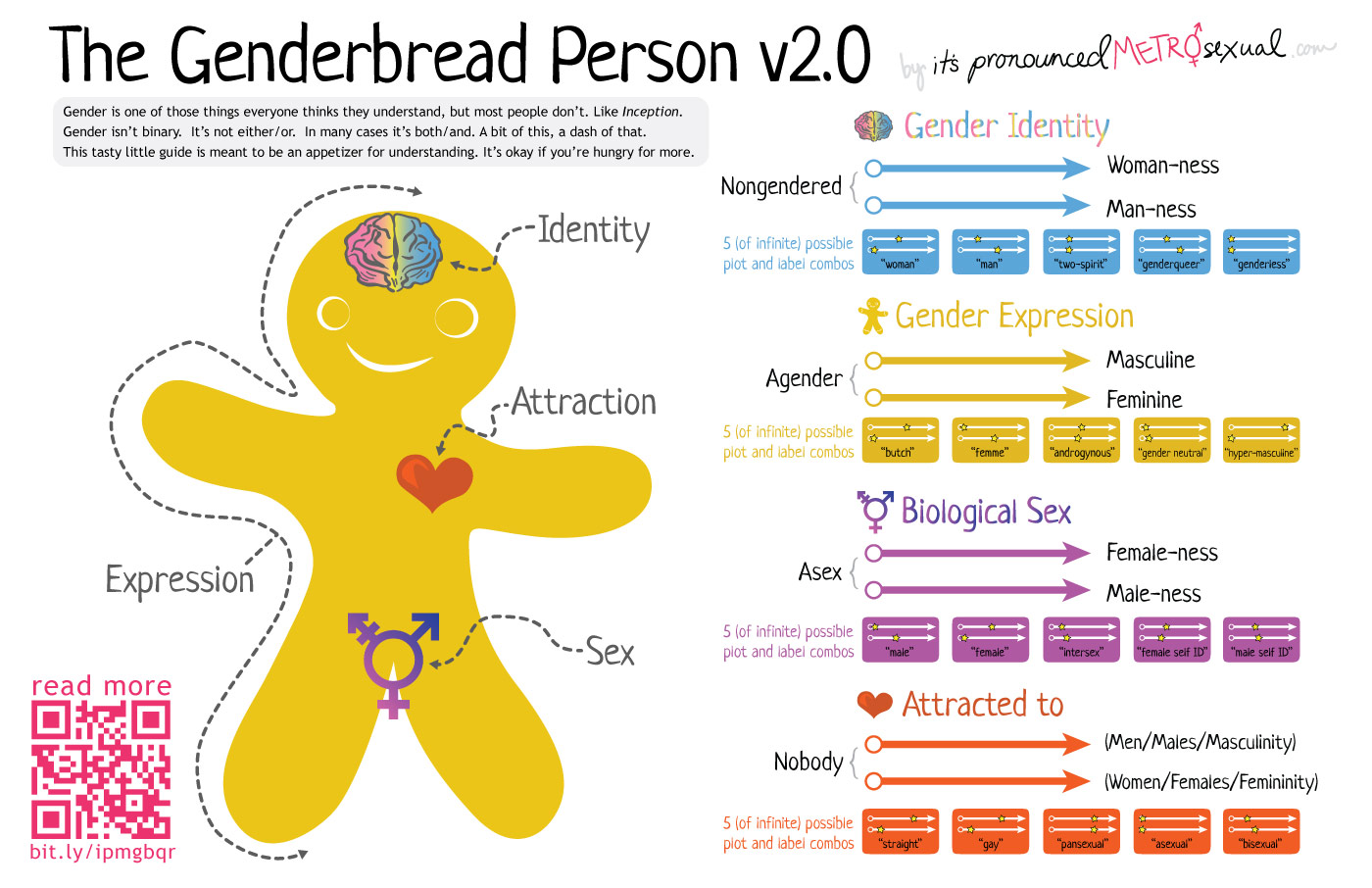Hundreds of comments, ditto emails, ditto Facebook messages and Twitter tweeters and in-person holla-atchas and I feel like I’m finally in a place to release this. I give you the new and improved Genderbread Person!
Depending on what you folks have to say after checking this out and reading the rationale below, I’ll be updating the Breaking through the Binary article and uploading a printer-friendly version of the new graphic. But first, let’s rationalize.
Let’s break this thing down.
I would really like to see this model replace all instances of the old one. It’s more accurate, more inclusive, and still just as accessible (adorable). I’m calling it the “-Ness” Model (independent unidirectional linear continua model seemed wordy), and it overcomes most of the hiccups of the old Genderbread (continua-based), and other models (2D plots, universe models, matrices, venn diagrams, etc.).
More accurate
Men are from Mars and women are from Venus is a funny expression (and scientifically dubious), but it actually nails down the strength of this model. Two planets, not two poles of one planet. Placing man/masculine/male on one end of something (continuum, 2D plot, etc.) and woman/feminine/female on the other (as I did with the old model) creates and reinforces a fallacy central to gender misunderstanding: to be more of one, you need to be less of the other. That’s incorrect. You can have both. You can have your genderbread and eat it, too.
More inclusive
What was lacking in the old Genderbread Person was the ability to define intensities of identification, or the amount of -ness one possesses. What’s lacking in other models is the ability to define intensity independently for the two major aspects of gender. Our new model comes up spades in both.
Let’s take “Attraction” for our example. We know that most people aren’t 100% straight or gay. A continuum of gay to straight (think Kinsey) leaves us with bi- in the middle. What about folks who are pansexual? Asexual? Mostly asexual? Hypersexual? None of those identities can be mapped on our old model. Ditto goes for folks who are agendered, pangendered, two-spirited, and the list goes on.
The amount of -ness is, in many cases, as crucial to one’s identity as which -ness they possess. A man who is hypersexually attracted to women and a man who is attracted to women both may identify as “straight,” but there is no question that they are two different men.
Just as adorable
While we upped the ante on accuracy and inclusivity, we did our best not to compromise what was arguably the most effective aspect of the old Genderbread Person: ‘e is freaking adorable! The original genderbread I baked a few months ago has been gobbled up well over 3 million times (that I can account for), and I attribute the wealth of that interest to the fact that it was easy to understand and visually appealing.
While this one is a bit harder to understand at first glance — mostly due to the fact that we’re using a method we created, instead of a standard graph — most people in our test group got it (even “non-mathy” people). So that’s good. It’s an introduction, after all, and we know how important introductions are.
Due gratitude and a huge thank you
This was a tough nut to crack. I want to give a massive kudos to everyone who provided input for this new model. I really believe it’ll take up the mantle of the old one and continue it’s globetrotting social justice tour. The biggest thanks of all goes to Karen Rayne, who, in an hour over coffee, helped me do what dozens of hours pouring over emails and comments couldn’t: make everything in my head make sense on paper.
What do you think?
Did we nail it? Are there a few tweaks you’d recommend? Or did I fall flat on my face so hard I jumbled my brain and am now incapable of realizing how far off this is from good? Let us know in the comments below.


